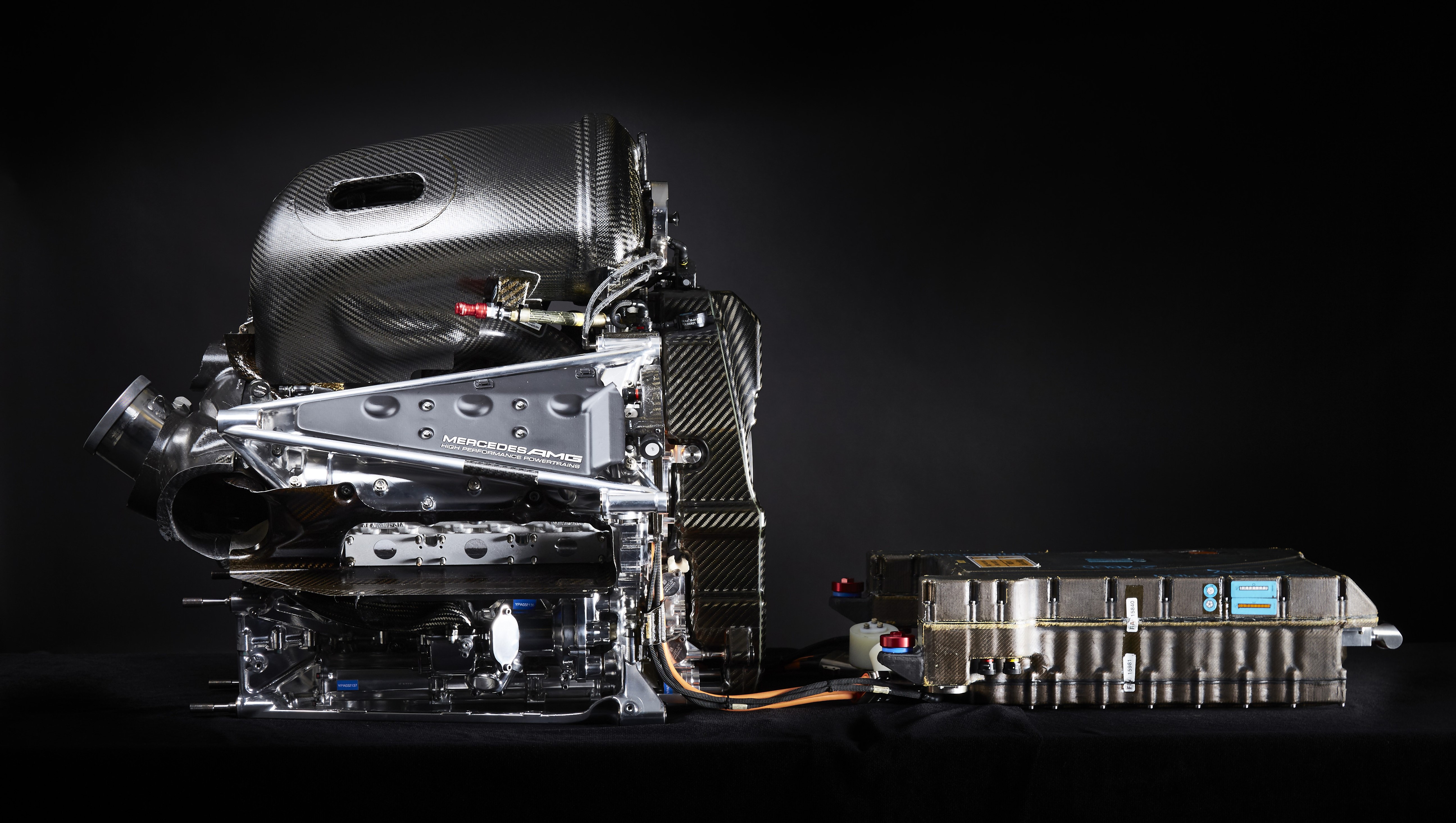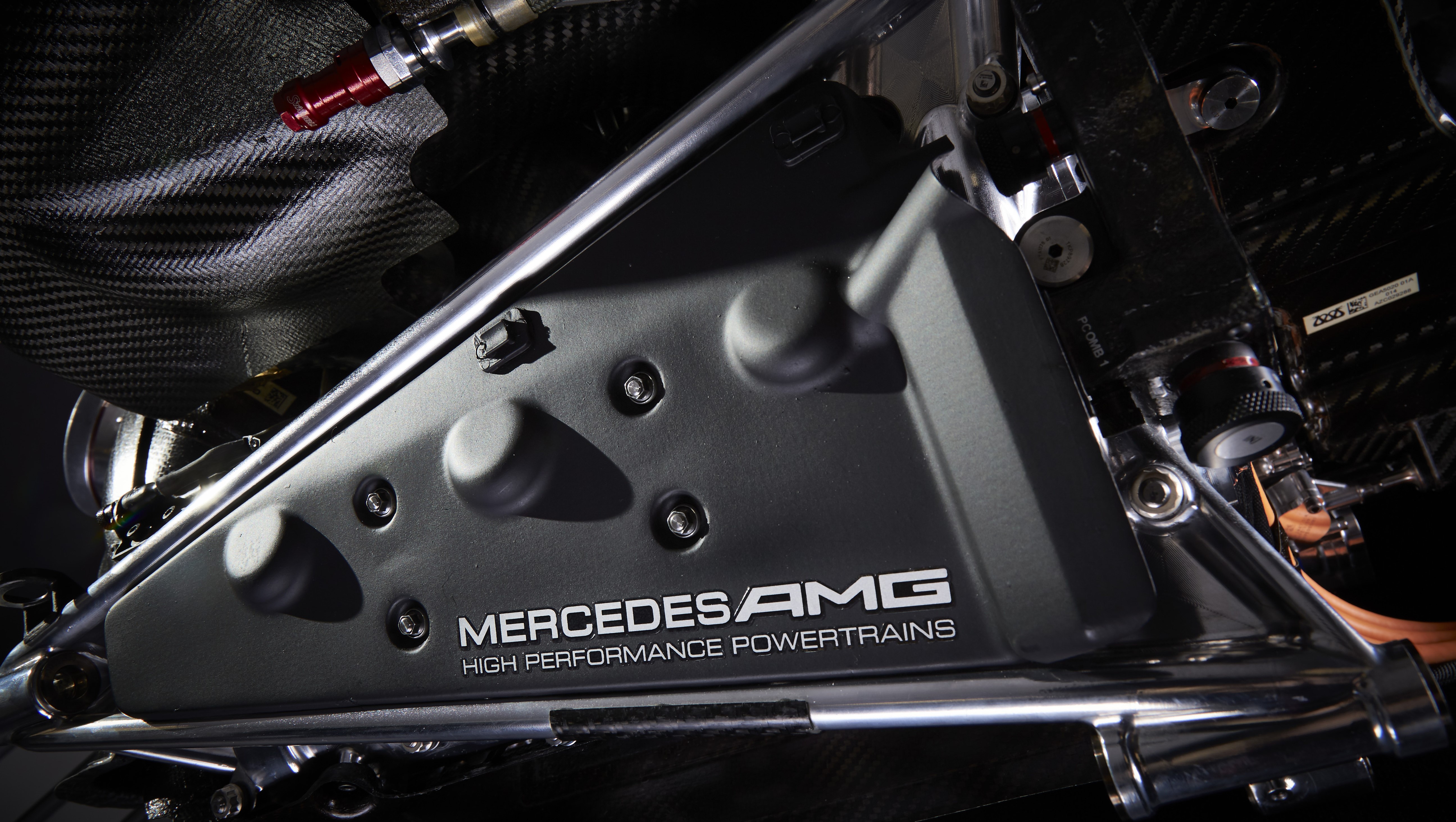
To give you in the inside track, we delve into the new engineering developments that has created Mercedes most powerful F1 engine to date.
Back in 2014, the FIA introduced the most comprehensive change to its rules regarding Formula 1. The idea was simple: bring these powerful racing vehicles in-line with the regulations that governed regular road cars. Fuel consumption was capped at 100kg (that's roughly 130 litres), meaning teams would have to finish a full race on one reserve.

With the freeze on engine differentiation now lifted, teams were free to start innovating again (albeit within this new green-thinking framework) and this led the engineers at Mercedes to focus on redefining the very heart of its engine blueprints: internal combustion. In order to meet this greener approach to autosports, Mercedes and every other F1 team had to start using hybrid engines - which incorporated normal fuel consumption with electric turbochargers.
Unsurprisingly, these major changes did significantly affect the performance powers of each and every F1 car, so teams such as Mercedes had to start thinking outside the box in order to get its powertrain back to a high level of drivability and performance. Those electric turbochargers proved a vital part of this new approach and saw Mercedes taking inspiration from a variety of sources as far reaching as the turbines found in helicopters.
The end result was a electrical motor that would sit between the engine's compressor and turbine, producing energy in excess of four regular road cars.
Another big focus has been on the importance of thermal efficiency (the ratio between how much energy is contained in a tank of fuel against how much is actually generated to power a vehicle). In many cases, this ratio is low as the engines in question weren't using fuel with the right kind of efficiency.
For instance, the earliest use of the internal combustion engine saw a thermal efficiency of around 17%. By comparison, Mercedes are currently working towards a figure closer to 50%.
Sign up to the T3 newsletter for smarter living straight to your inbox
Get all the latest news, reviews, deals and buying guides on gorgeous tech, home and active products from the T3 experts

Energy storage is one of the final codes to the high performance hybrid combination. Creating an engine that meets guidelines is one thing, and having it generate the required level of performance is another, but how to store that energy and give each driver the most versatile drive possible?
Say hello to the Mercedes-Benz PU106C hybrid power unit. This uber powerful lithium-ion battery pack can discharged over 70 times during each Grand Prix, harvesting kinetic energy from braking and heat energy from the turbocharger.
The unit then deploys around 120kW/161Hp of power into the drive of the rear wheels and gives the engine a much needed boost for those all important overtakes and all-out speed on long stretches. What you're left with is an engine that's fuel efficient, green-friendly and just as versatile in the high octane area that is Formula 1. And with Mercedes' latest innovations ready to purr away under the hood this season, we're expecting big things in 2016...
Why not check out: Sky VR films debut tomorrow with F1, available on Oculus Rift and Gear VR
Dom Reseigh-Lincoln has been writing for T3 for over half a decade now, covering everything from mobile phones and laptops right through to video games and gaming peripherals. Purveyor of an excellent beard, as well as some perpetually cheeky offspring, Dom likes to wind down in his spare time by listening to heavy metal.

